Hanukkah
About Chanukah - (Hanukkah)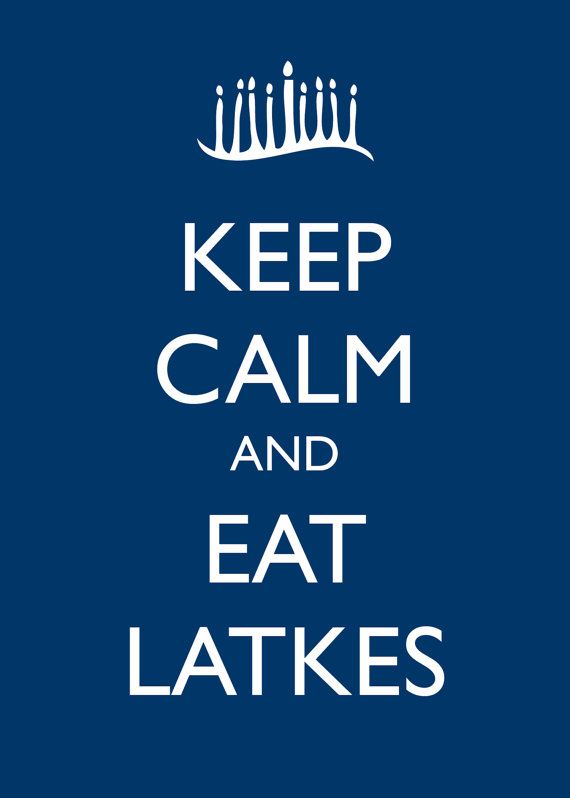 The Hebrew word chanukah means "dedication" and marks an eight day winter celebration (from Kislev 25 - Tevet 3) that commemorates The Hebrew word chanukah means "dedication" and marks an eight day winter celebration (from Kislev 25 - Tevet 3) that commemorates the rededication of the Second Temple after a small group of Jewish believers defeated the forces of assimilation at work in their world. As such, Chanukah represents the victory of faith over the ways of speculative reason, and demonstrates the power of the miracle in the face of mere humanism. In the second century BCE, the Holy Land was ruled by the Seleucids (Syrian-Greeks), who tried to force the people of Israel to accept Greek culture and beliefs instead of mitzvah observance and belief in G‑d. Against all odds, a small band of faithful Jews, led by Judah the Maccabee, defeated one of the mightiest armies on earth, drove the Greeks from the land, reclaimed the Holy Temple in Jerusalem and rededicated it to the service of G‑d. When they sought to light the Temple's Menorah (the seven-branched candelabrum), they found only a single cruse of olive oil that had escaped contamination by the Greeks. Miraculously, they lit the menorah and the one-day supply of oil lasted for eight days, until new oil could be prepared under conditions of ritual purity. To commemorate and publicize these miracles, the sages instituted the festival of Chanukah. At the heart of the festival is the nightly menorah lighting. The menorah holds nine flames, one of which is the shamash (“attendant”), which is used to kindle the other eight lights. On the first night, we light just one flame. On the second night, an additional flame is lit. By the eighth night of Chanukah, all eight lights are kindled. A menorah is lit in every household (or even by each individual within the household) and placed in a doorway or window. The menorah is also lit in synagogues and other public places. In recent years, thousands of jumbo menorahs have cropped up in front of city halls and legislative buildings, and in malls and parks all over the world.
On Chanukah, it is customary to play with a “dreidel” (a four-sided spinning top bearing the Hebrew letters, nun, gimmel, hei and shin, an acronym for nes gadol hayah sham, “a great miracle happened there”). The game is usually played for a pot of coins, nuts, or other stuff, which is won or lost based on which letter the dreidel lands when it is spun. |
Simchat Torah

About Simchat TorahIs the last of the fall holidays, arriving at the end of Sukkot.During Simchat Torah we can be filled with joy and love for God, for the Torah and for the Jewish community. The name of this holiday means “Joy of the Torah,” and it marks the completion of the year long cycle of weekly Torah readings (parshiot ). Since the Torah is continuously read throughout the year, when we get to the end of Deuteronomy 34 we immediately start over by reading the first verses of Genesis. By doing that, we show the unending cycle of Torah study. As the Torah reading concludes at the end of Deuteronomy, everyone rises and proclaims: Be strong, be strong, and let us strengthen each other. How is Simchat Torah CelebratedSimchat Torah is celebrated with singing, dancing, good food and drink at the synagogue. There is no set home observance.At an evening 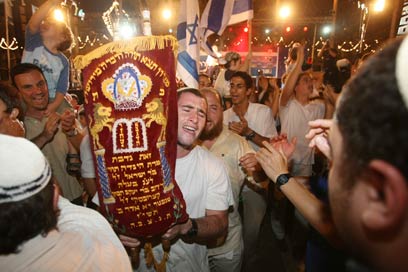 service, all the Torah scrolls are removed from the ark and paraded around the sanctuary in seven circles known as hakafot (Hebrew for “encirclement”). service, all the Torah scrolls are removed from the ark and paraded around the sanctuary in seven circles known as hakafot (Hebrew for “encirclement”).In some synagogues, those who are in the seats close to the aisles touch their prayer book (siddur ) or the fringes of their prayer shawl (tallit) to the Torah as it passes by. In others, congregants leave their seats, so they may dance alongside the Torahs as they make the circuits. Many congregations liven up the celebration with music and dancing as they circle with the Torahs. Children participate in the dancing and singing; some may carry flags and miniature Torahs. Carrying the Torah during the procession is an honor, often shared by all who are present. Some synagogues unroll the entire scroll in a huge circle, with people carefully holding the parchment Jesus and Simchat TorahSince Yeshua the Mashiach (Jesus Christ) is Torah Ha-Emet- the True Torah - we should likewise celebrate the Joy of Torah in our lives. Yeshua is the Living Torah, the Living Word, written upon our hearts so that we can truly dance and embrace the Truth given from God. Indeed, Yeshua did not come to destroy the Torah but rather to fulfill it in our lives (Matthew 5:17-20). As it is written in the Tanakh regarding the New Covenant:"Behold, the days come, saith the LORD, that I will make a new covenant (B’rit Chadashah) with the house of Israel, and with the house of Judah: Not according to the covenant that I made with their fathers in the day that I took them by the hand to bring them out of the land of Egypt; which my covenant they brake, although I was an husband unto them, saith the LORD: But this shall be the covenant that I will make with the house of Israel; After those days, saith the LORD, I will put my law (Torah) in their inward parts, and write it (the Torah) in their hearts; and will be their God, and they shall be my people. And no longer shall each one teach his neighbor and each his brother, saying, 'Know the LORD,' for they shall all know me, from the least of them to the greatest, declares the LORD. For I will forgive their iniquity, and I will remember their sin no more."  (Jeremiah 31:31-34) This very idea is clearly re-affirmed in the New Testament (see Hebrews 8:8-11). As Christians, then, we have the greater reason to celebrate Torah, since Yeshua (Jesus) is of course the Central Message of the Torah-- its inner meaning and incarnation. He is the Torah made flesh (John 1:14), the faithful Mediator of the New and Better Covenant (Hebrews 8:6), and He does what Moses and the Sinatic covenant could never do, namely, write the Torah within our inward parts and upon our hearts so that we might truly be the people of God (Jeremiah 31:31-34). By means of His sacrificial death, the righteous demands of Torah are fully satisfied, and the LORD is glorified as both just and merciful (i.e., the justifier of those who put their trust in Him). (Jeremiah 31:31-34) This very idea is clearly re-affirmed in the New Testament (see Hebrews 8:8-11). As Christians, then, we have the greater reason to celebrate Torah, since Yeshua (Jesus) is of course the Central Message of the Torah-- its inner meaning and incarnation. He is the Torah made flesh (John 1:14), the faithful Mediator of the New and Better Covenant (Hebrews 8:6), and He does what Moses and the Sinatic covenant could never do, namely, write the Torah within our inward parts and upon our hearts so that we might truly be the people of God (Jeremiah 31:31-34). By means of His sacrificial death, the righteous demands of Torah are fully satisfied, and the LORD is glorified as both just and merciful (i.e., the justifier of those who put their trust in Him).Article Text |
Sukkotwith Information from
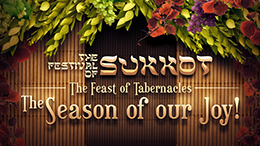
About SukkotSukkot is the third and final festival that commemorates the Jewish exodus from Egypt.The escape of Israel from Egypt is remembered at Passover, entering into a covenant with God at Mount Sinai is recalled at Shavuot, and sleeping in a temporary hut or booth (“sukkah” in Hebrew) while wandering in the wilderness is memorialized in the holiday of Sukkot. “Sukkot” is the plural form of Sukkah. Things we learn from Sukkot“Sukkot reminds us that the ultimate security is found not within the walls of our home but in the presence of God and one another.”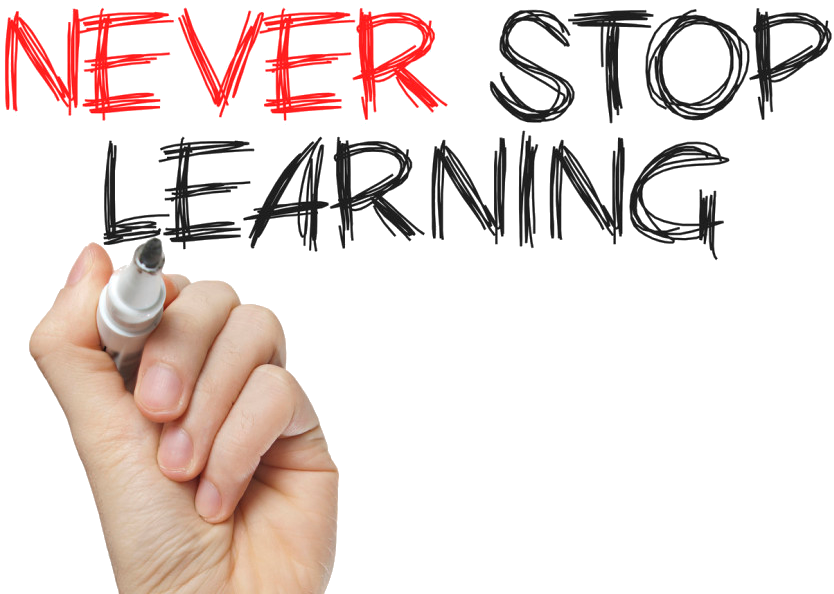 [Rabbi Nina Beth Cardin,The Tapestry of Jewish Time.] [Rabbi Nina Beth Cardin,The Tapestry of Jewish Time.]As the Jews where let out of their darkness (the land of Egypt) by Moses, we also the non-Jewish and Jewish people alike are taken out of our land of darkness our sin by Yeshua into the promised land (the Heavenly kingdom). We live our life in our current world, a desolate sin filled world which is everywhere around us. The sukkot is a place of joy and a reminder that where ever we are even in a dark sinful world we can celebrate in the most humble abodes in the presence of God. Feast of Tabernacles / SukkothFeast of Tabernacles (Sukkoth or Booths) is celebrated Tishri 15 as outlined in Leviticus 23:33-43. This seven-day harvest festival, during which the Jewish people are told to live in “booths,” or temporary shelters, is a reminder to future generations of how the Israelites had also lived in booths when God delivered them out of Egypt.A number of Christians believe this is the date of Christ’s birth when He came to “tabernacle among us.” We should look forward expectantly to the Feast of Tabernacles, just as we look forward to the coming of the Messiah to bring His government, His Kingdom, and His laws (Mic. 4:1). Again the Lord spoke to Moses, saying, “Speak to the sons of Israel, saying, ‘On the fifteenth of this seventh month is the Feast of Booths for seven days to the Lord. On the first day is a holy convocation; you shall do no laborious work of any kind. For seven days you shall present an offering by fire to the Lord. On the eighth day you shall have a holy convocation and present an offering by fire to the Lord; it is an assembly. You shall do no laborious work. These are the appointed times of the Lord which you shall proclaim as holy convocations, to present offerings by fire to the Lord—burnt offerings and grain offerings, sacrifices and drink offerings, each day’s matter on its own day—besides those of the Sabbaths of the Lord, and besides your gifts and besides all your vows and freewill offerings, which you give to the Lord. On exactly the fifteenth day of the seventh month, when you have gathered in the crops of the land, you shall celebrate the feast of the Lord for seven days, with a rest on the first day and a rest on the eighth day. Now on the first day you shall take for yourselves the foliage of beautiful trees, palm branches and boughs of leafy trees and willows of the brook, and you shall rejoice before the Lord your God for seven days. You shall thus celebrate it as a feast to the Lord for seven days in the year. It shall be a perpetual statute throughout your generations; you shall celebrate it in the seventh month. You shall live in booths for seven days; all the native-born in Israel shall live in booths, so that your generations may know that I had the sons of Israel live in booths when I brought them out from the land of Egypt. I am the Lord your God’” (Leviticus 23:33-43). Five days after the Day of Atonement, the Feast of Booths (or Tabernacles) begins. The principle element of this celebration is “living in booths” for a week. The actual practice among the Jews consists of building a “hut” in the backyard or on the porch. They make the hut by tying branches together, because it is not to be nailed or constructed in any way that suggests permanence. In fact, the properly made hut will leak. This virtue permits the occupants to see the stars. Although the Jews do not actually live in these things, they will share meals in them and sometimes spend at least one night  camping out. I know of a Jewish family that sometimes takes a backpacking trip during this time. camping out. I know of a Jewish family that sometimes takes a backpacking trip during this time.I like to call the Feast of Tabernacles, “The holiday of the manifest presence of God.” Here is why. Leviticus says, “Israel shall live in booths, so that your generations may know that the sons of Israel lived in booths when I brought them out from the land of Egypt.” The hut lets children pretend to be Israelites in the wilderness. So, what was it like in those days? The twelve tribes had their camps on the north, south, east, and west. In the center stood the tabernacle. Over the tabernacle appeared the manifested presence of the Lord. The Lord said to Moses, “How long will this people spurn Me? And how long will they not believe in Me, despite all the signs which I have performed in their midst? I will smite them with pestilence and dispossess them, and I will make you into a nation greater and mightier than they. But Moses said to the Lord, “Then the Egyptians will hear of it, for by Your strength You brought up this people from their midst, and they will tell it to the inhabitants of this land. They have heard that You, O Lord, are in the midst of this people, for You, O Lord, are seen eye to eye, while Your cloud stands over them; and You go before them in a pillar of cloud by day and in a pillar of fire by night. Now if You slay this people as one man, then the nations who have heard of Your fame will say, ‘Because the Lord could not bring this people into the land which He promised them by oath, therefore He slaughtered them in the wilderness.’ But now, I pray, let the power of the Lord be great, just as You have declared, ‘The Lord is slow to anger and abundant in lovingkindness, forgiving iniquity and transgression; but He will by no means clear the guilty, visiting the iniquity of the fathers on the children to the third and the fourth generations.’ Pardon, I pray, the iniquity of this people according to the greatness of Your lovingkindness, just as You also have forgiven this people, from Egypt even until now.” So the Lord said, “I have pardoned them according to your word; but indeed, as I live, all the earth will be filled with the glory of the Lord” (Numbers 14:11-21). What an incredible sight to see everyday. “They have heard that You, O Lord, are in the midst of this people, for You, O Lord, are seen eye to eye, while Your cloud stands over them; and You go before them in a pillar of cloud by day and in a pillar of fire by night.” When the Lord wanted them to move, the pillars moved. When the Lord wanted them to stay, the pillars stayed. This is the tale parents can tell their children during the dinner meal in the hut. When the sky gets dark and you can gaze at the stars, the parents can tell their children how the universe manifests the presence of God. It is a good time to read Psalm 19. The Feast of Tabernacles also looks ahead to the Messianic Kingdom. It looks ahead to the time when the presence of God, through the reign of His son, is as manifest on the earth as it was in the days of the wilderness travels. In fact, according to Zechariah, the Feast of Tabernacles will be an international celebration during the Kingdom. And the Lord will be king over all the earth; in that day the Lord will be the only one, and His name the only one. … Then it will come about that any who are left of all the nations that went against Jerusalem will go up from year to year to worship the King, the Lord of hosts, and to celebrate the Feast of Booths. And it will be that whichever of the families of the earth does not go up to Jerusalem to worship the King, the Lord of hosts, there will be no rain on them. If the family of Egypt does not go up or enter, then no rain will fall on them; it will be the plague with which the Lord smites the nations who do not go up to celebrate the Feast of Booths. This will be the punishment of Egypt, and the punishment of all the nations who do not go up to celebrate the Feast of Booths (Zechariah 14:9, 16-19). It should be clear, by now, how the fall holidays of Leviticus track the Second Coming of Jesus Christ. The blowing of trumpets speak of the warnings and shaking on the earth to call all mankind to repent. The Day of Atonement speaks of the day that Jesus will physically return and the day that Israel as a nation will find salvation. The Feast of Tabernacles speaks of the Millennial Kingdom. The Puritans and SukkotWhen the Puritans came to America they were deeply immersed in their Hebrew heritage. Marvin Wilson explains in his book, Our Father Abraham (pp. 127-128):
The Reformers put great stress on sola scriptura (Scripture as the soul and final authority of the Christian). The consequent de-emphasis on tradition brought with it a return to the biblical roots. Accordingly, during the two centuries following the Reformation, several groups recognized the importance of once again emphasizing the Hebraic heritage of the Church. Among these people were the Puritans who founded Pilgrim America. The Puritans came to America deeply rooted in the Hebraic tradition. Most bore Hebrew names. The Pilgrim fathers considered themselves as the children of Israel fleeing “Egypt” (England), crossing the “Red Sea” (the Atlantic Ocean), and emerging from this “Exodus” to their own “promised land” (New England). The Pilgrims thought of themselves as all the children of Abraham and thus under the covenant of Abraham (Feingold n.d., 46).Thus, the seeds of religious liberty for the American Church did not come from New England leaders like Roger Williams and Anne Hutchinson as noble as they and others were. Rather, it came from the Hebrews themselves, whose sacred Writings inspired the Puritans. The Jewish New Testament Commentary says, “The Puritans, who took the Old Testament more seriously than most Christians, modeled the American holiday of Thanksgiving after Sukkoth” (Stern 1992). The Puritans wanted to abolish pagan religious ceremonies that had crept into the Roman Catholic church from Babylonianism. To rid the church of all pagan superstitions, the Puritans did away with all the calendar days. Christmas was outlawed in England in 1644 by an act of Parliament, for it was a lingering pagan element of the papal calendar, and they considered it disobedient to God’s Word (Deut. 12:30, 31; 1 John 5:18-21; 2 Cor. 6-14-7:1). By 1659, Massachusetts had passed a law fining anybody who celebrated Christmas. Under the influence of puritanical thought, America suppressed the celebration of Christmas well into the nineteenth century. By doing away with all the calendar days, the Puritans also threw out the baby (the Biblical holidays) with the bath water (pagan festivals such as Halloween, which is the ancient Samhain Festival of Death).
The festival of Sukkot has a prophetic dimension awaiting fulfillment. As the “Day of Ingathering” of the harvest, Sukkot prefigures the gathering together of the Jewish people in the days of the Messiah’s reign on earth (Isa. 27:12-13; Jer. 23:7-8). Indeed all of the nations of the earth that survived the Great Tribulation will come together to worship the LORD in Jerusalem during the Feast of Sukkot (Zech.14:16-17). Sukkot, therefore is a vision of olam haba, the world to come... |
Tu B'shvat
 Month of ShevatShevat is the name of a winter month in the Jewish lunar calendar.Tu is 15 Every letter in the Hebrew alphabet is also a number: T (tet) = 9 and U (vov) = 6. The “Bi” means “of ” or “ with”. Now you know how to decode the name. TuBiShvat is both a date and the name of a holiday celebrated on that date; it’s understood in the same way as the Fourth of July. About Tu B'ShevatAccording to Biblical law, there is a seven year agricultural cycle, concluding with the Sabbatical year..jpg) When the Holy Temple stood in Jerusalem, on years one, two, four and five of this cycle, farmers were required to separate a tenth of their produce and eat it in Jerusalem. This tithe is called Maaser Sheni, the Second Tithe, because it is in addition to the (two percent which must be given to the Kohain, and the) ten percent which is given to the Levite. On the third and sixth years of the cycle, instead of the owners eating the Maaser Sheni in Jerusalem, they gave this second tithe to the poor, who were permitted to consume it wherever they wished. It takes approximately four months for the rains of the new year to saturate the soil and trees, and produce fruit [On the Sabbatical year, no tithes are separated. All produce which grows during this year is ownerless and free for anyone to take.] It was therefore of vital importance to ascertain when the new year started for produce. Although this day is Rosh Hashanah for trees, we attach special significance to this holiday because "Man is [compared to] the tree of the field" (Deuteronomy 20:19). Through cultivating strong roots – faith and commitment to G‑d – we produce many fruits—Torah and Mitzvot. Trees are HolyJudaism has always seen trees as sacred. The Torah itself is called a “tree of life.”The Torah also forbids the cutting down of an enemy’s fruit trees, even in a time of war when the wood might be needed to attack a city. Caretakers Of The EarthIn the book of Genesis, humankind is instructed to be shomrei adamah, caretakers of the Earth, and of all God’s creations.Modern Tu B’Shevat CustomsThere are various minhagim (customs) associated with Tu B’Shevat, including:
Fulfillment in YeshuaJohn J. Parsons says it so beautiful on his site Hebrew 4 Christians.From the last page of his excelent Tu B'Shevat pdf file. Sign of the Almond TreeThe almond tree has special significance for Tu B’Shevat.The word for almond is shakeid which comes from shakad, a verb that means to “watch” or “wake.” The almond tree is the among the first trees to “awaken” from its winter sleep... We therefore eat almonds on Tu B’Shevat to celebrate the return of spring. In the Scriptures there is a play on words regarding the use of “almond” and God’s “watchfulness” (i.e., faithfulness): “And the word of the LORD came to me, saying, ‘Jeremiah, what do you see?’ And I said, ‘I see an almond branch. Then the LORD said to me, ‘You have seen well, for I am watching over my word to perform it’“ (Jer. 1:11-12). 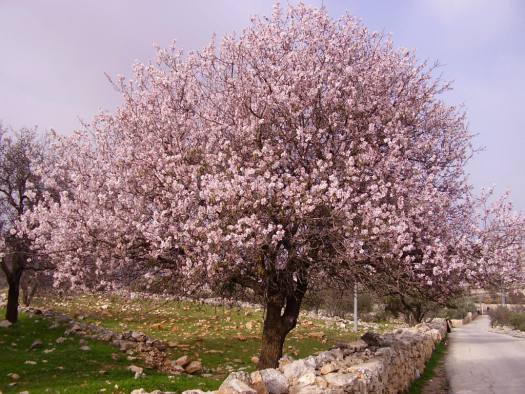 The blooming branch of an almond tree is breathtakingly beautiful - so much so that the LORD decorated the Menorah with oil cups (i.e., gevi’im) in the shape of almond blossoms (Exod. 25:33-34; 37:19-20). Indeed , the Menorah itself is a symbol of the “Tree of Life” and therefore it is fitting to regard it during this season... Finally, some have said that Aaron’s rod - the staff he used to perform signs and wonders during the Exodus - was made from a branch of an almond tree.... Recall that during the incident of Korach’s rebellion, Aaron’s rod budded, flowered and produced almonds overnight (Num. 17), which was symbolic of the power of the “resurrected priest of God” that was coming... Just as God exclusively chose Aaron to minister before Him, so Yeshua was the exclusively chosen to be the greater High Priest of the New Covenant. Regarding His priesthood “after the order of Malki-Tzedek,” the author of Book of Hebrews wrote: “No one takes this honor for himself, but only when called by God, just as Aaron was” (Heb. 5:4). And just as Aaron’s lifeless rod miraculously brought forth life, Yeshua’s cross -- likewise made of wood -- also “budded and produced blossoms” after His resurrection from the dead. Yeshua went into the sanctuary made without hands and there offered his blood to procure for us an everlasting atonement. His sacrifice as our High Priest gives us life from the dead! Under the terms of the Sinai covenant, “Aaron’s rod” was a picture of God’s authority and judgment, just the Messiah’s cross and resurrection vindicates God’s exclusive choice of Yeshua as our Mediator before God. Those who reject His choice will ultimately share the same fate as those who partook of Korach’s rebellion (Jude 1:11). Yeshua (alone) is Adonai Tzidkenu, “the LORD our Righteousness” and Tzemach Tzaddik, God’s “Righteous Branch.” Praise His Name forever. |
Yom Kippurwith Information from
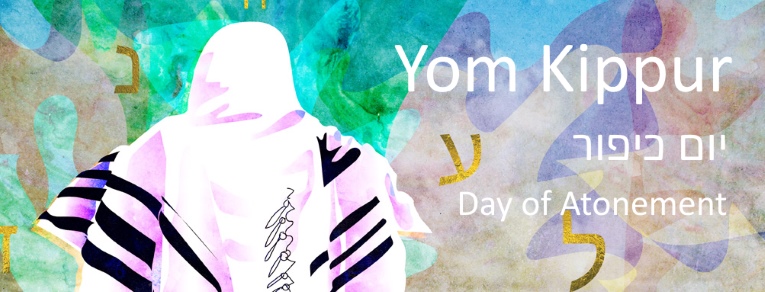
About Yom KippurThe holiest day in the Jewish year (a fast day not a feast day), the Day of Atonement (Yom Kippur), is spent in fasting, prayer, and confession. This was one gracious day a year given by God that each individual could receive forgiveness. The high priest enters the holy of holies to make atonement for the nation by sacrificing an animal (Lev. 23:26-32). Jesus has provided our atonement, “for all have sinned and fall short of the glory of God…” (Rom. 3:23) and are justified freely by his grace through the redemption that came by Him.Aaron shall bring the goat whose lot falls to the LORD and sacrifice it for a sin offering. But the goat chosen by lot as the scapegoat shall be presented alive before the LORD to be used for making atonement by sending it into the desert as a scapegoat. (Leviticus 16,9-10) After a Jewish tradition, the scapegoat did return from the desert at Yom Kippur, which followed Jesus’ crucifixion. After a Jewish tradition, the glory of the LORD was not present anymore in the Holy of Holies during the last 40 years before the destruction of the temple through Titus: Since Golgatha! Since then, the crimson strip of wool tied to one of the scapegoat’s horns, did not turn white anymore!
The Day of Atonement is a divine rehearsal of the “Day of the LORD.” |
More Articles …
Page 2 of 4










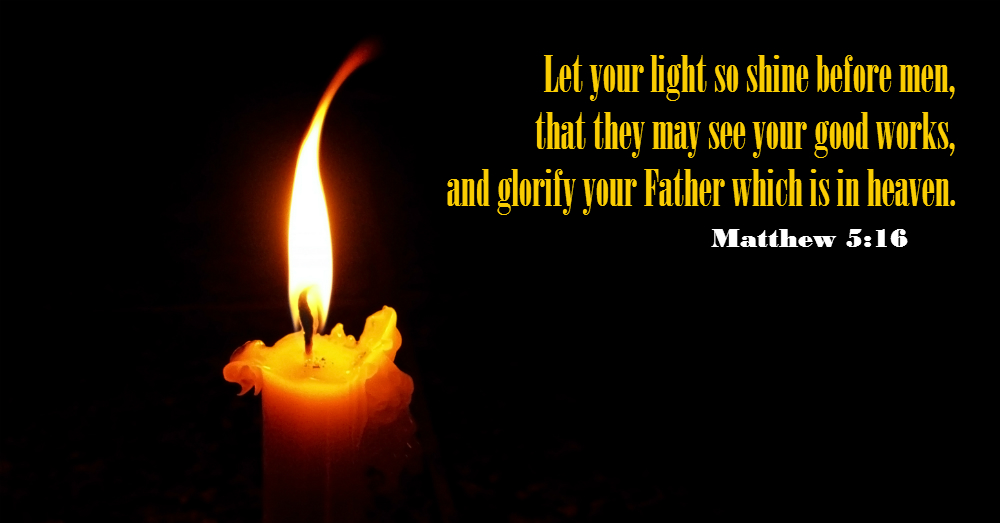
 Future Fulfillment
Future Fulfillment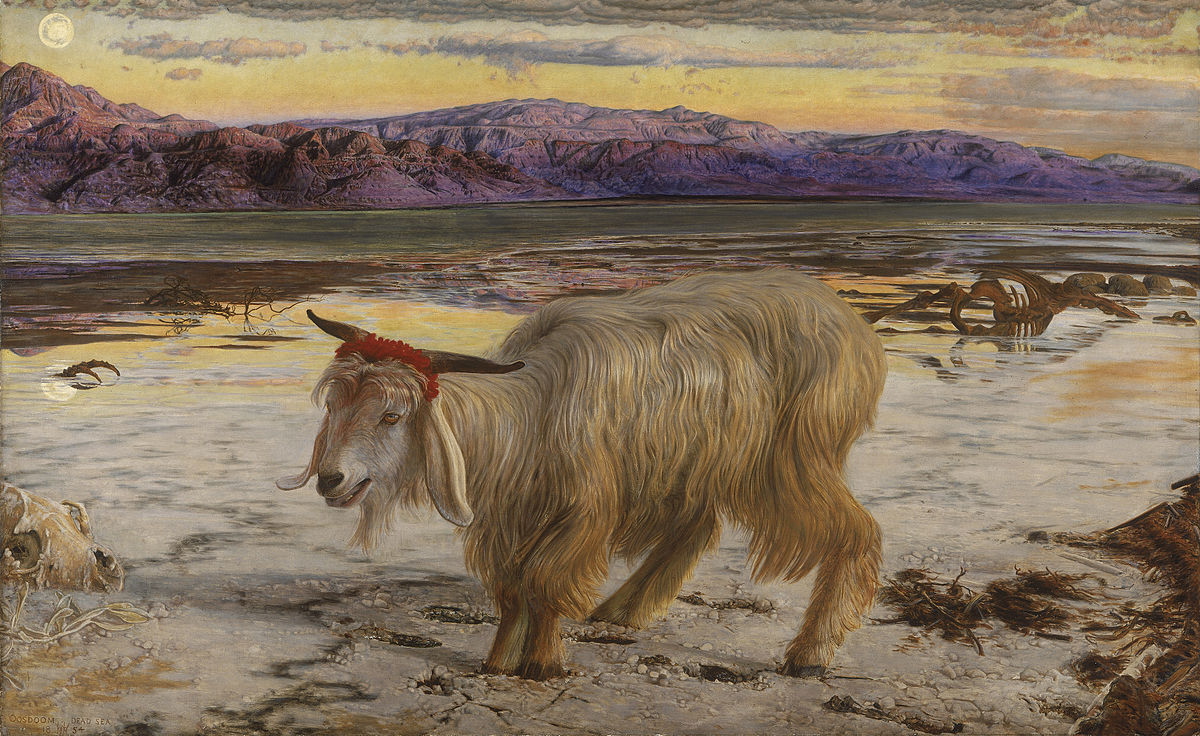 Prophetic Significance
Prophetic Significance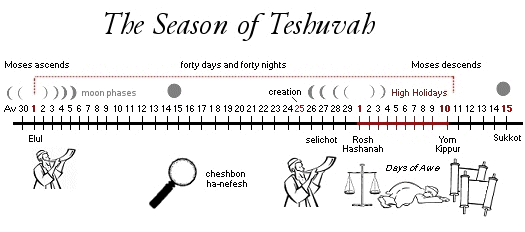 During this stretch of time, the tradition encourages all of us to think about who we may have harmed over the course of the last year, whether intentionally or by accident, and whether by word or by deed . We’re invited to take time to reach out to people personally and take responsibility for our mistakes . The idea is to talk privately with family members, friends or anyone else we feel we may have wronged . We do our best to admit our mistakes, seek forgiveness from those we have hurt, and offer to make amends . This can be a really powerful exercise for families, including families with young kids .
During this stretch of time, the tradition encourages all of us to think about who we may have harmed over the course of the last year, whether intentionally or by accident, and whether by word or by deed . We’re invited to take time to reach out to people personally and take responsibility for our mistakes . The idea is to talk privately with family members, friends or anyone else we feel we may have wronged . We do our best to admit our mistakes, seek forgiveness from those we have hurt, and offer to make amends . This can be a really powerful exercise for families, including families with young kids . 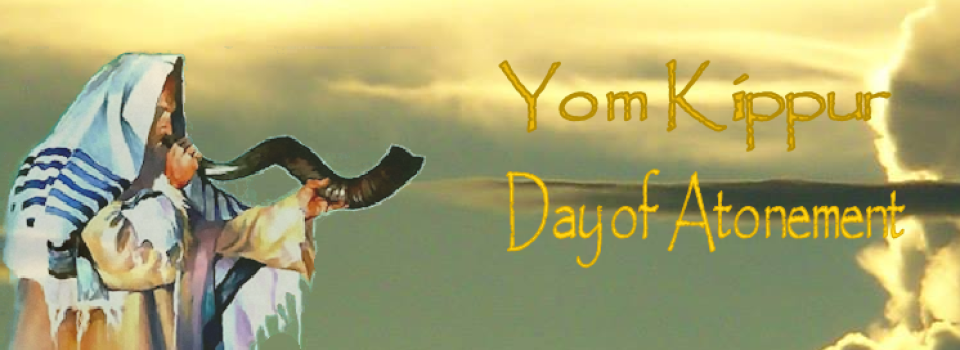
 The Day of Atonement, or Yom Kippur, represents the day when the priest puts on special clothes and makes offerings to atone, or cleanse, the holy sanctuary, the temple, and the altar. He then makes atonement for the priests and the people. The day is solemn and serious. It is a day of complete rest and fasting with a goal of humbling the soul.
The Day of Atonement, or Yom Kippur, represents the day when the priest puts on special clothes and makes offerings to atone, or cleanse, the holy sanctuary, the temple, and the altar. He then makes atonement for the priests and the people. The day is solemn and serious. It is a day of complete rest and fasting with a goal of humbling the soul. verses.
verses.

















